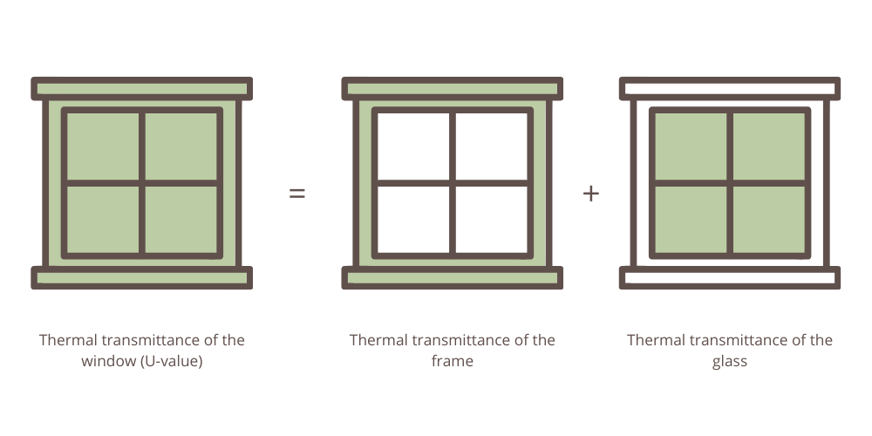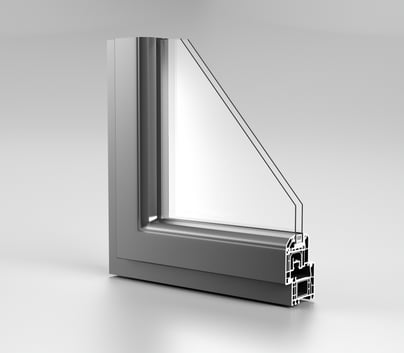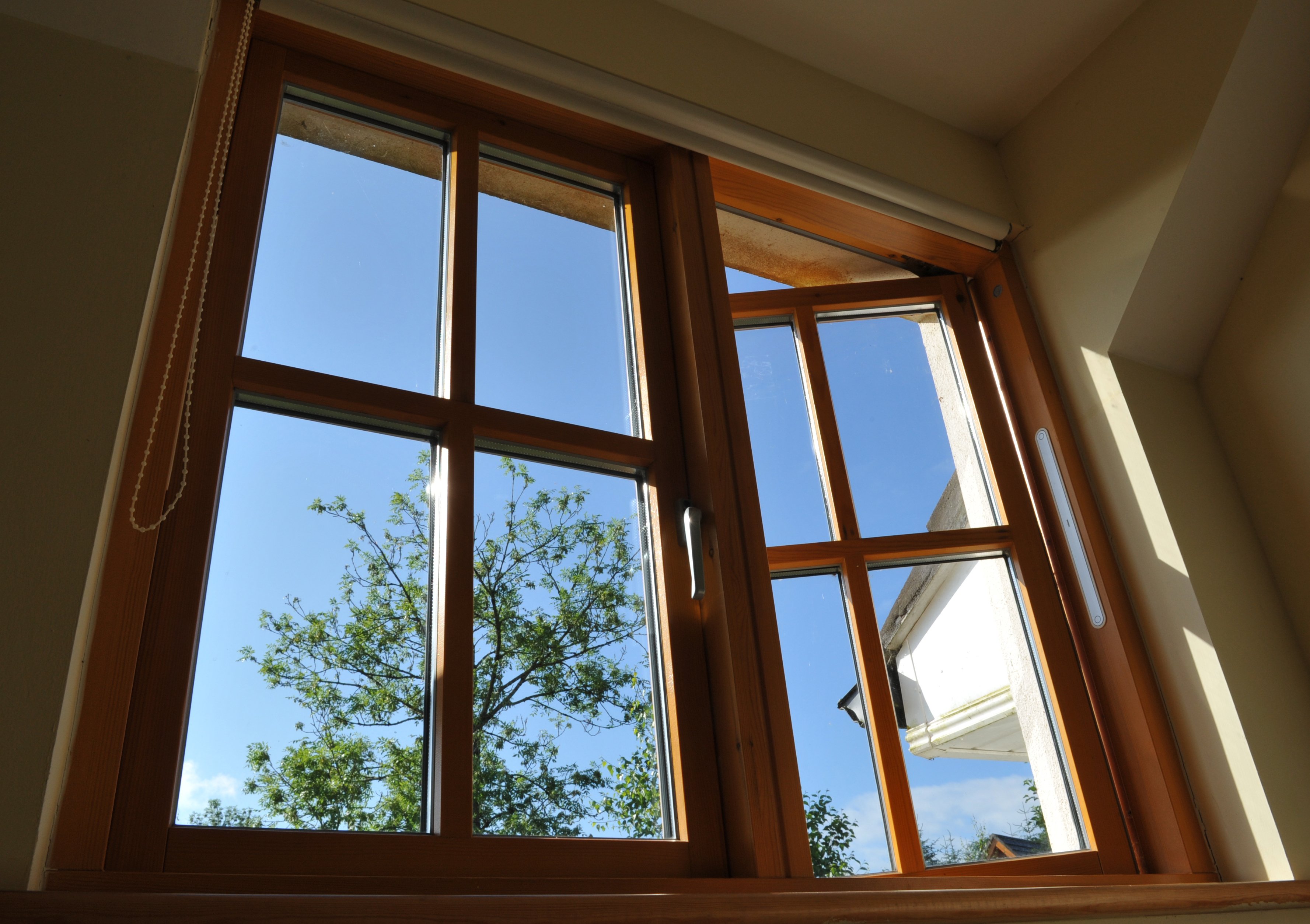In the field of sustainable construction, achieving energy efficiency in buildings and facilities is essential. Windows not only let in natural light and fresh air, but also play a key role in the energy performance and comfort of buildings.
Thermally insulated windows, also known as energy-efficient windows, are an essential choice when it comes to energy efficiency in buildings. They regulate indoor temperature, reduce energy consumption and minimise their carbon footprint.
Calculation of thermal transmittance of windows
Thermal transmittance, represented by the U-value, is the property that allows us to evaluate the energy efficiency of windows based on their heat transfer rate through the glass, frames, or other elements that make them up.
Broadly speaking, lower U-values indicate higher insulation in windows. The aim of thermally insulated windows is to reduce heat loss during cold seasons and prevent heat gain during warmer months, thus optimising energy consumption and improving occupant comfort.
It is important to distinguish the U-value of the window from the U-value of the glass or frame. The U-value of the window is calculated taking into account the frame and glass assembly as well as the roller shutter box, if any.

The CTE (Technical Building Code) sets maximum limits for the U-value of the window as a whole depending on the climatic zone in which the building is located.
| Item | Winter climate zone | |||||
| α | A | B | C | D | E | |
| UH openings(frame assembly, glass and, if applicable, roller shutter box) | 3.2 | 2.7 | 2.3 | 2.1 | 1.8 | 1.8 |
Window frames: cost, durability and insulation
Although the type of glass is crucial to the thermal performance of a window, the choice of frame type is also very important. The frames not only provide structural support, but also influence the overall energy efficiency of the window assembly.
The most common materials for window frames include PVC, aluminium and wood, each with different thermal properties and environmental impacts that we can quantify through Life Cycle Assessment. The following table summarises the main characteristics of the different types of frames:
| Frame type | Cost | Durability | Insulation (transmittance) | Environmental impact |
| PVC | € | Medium | Medium | Medium |
| Aluminium | €€ | Optimum | Low | High |
| Wood | €€€ | Low | Optimum | Low |
Types of window glass
Another element that makes a window more or less energy efficient is the type of glass used. In general, there are three types of glass, ranked from least to most energy efficient:
 Monolithic or single glass: These are the traditionally used glasses, the ones that have always been used. They consist of a single pane of glass, offering minimal insulation and relatively high U-values, which makes them less efficient in regulating indoor temperatures. Currently this type of glazing no longer complies with the requirements of the CTE.
Monolithic or single glass: These are the traditionally used glasses, the ones that have always been used. They consist of a single pane of glass, offering minimal insulation and relatively high U-values, which makes them less efficient in regulating indoor temperatures. Currently this type of glazing no longer complies with the requirements of the CTE.- Double glazing: They represent a major breakthrough in energy efficiency. Double glazing has two panes of glass separated by an air chamber, although the use of argon is becoming increasingly common. This type of glazing significantly reduces heat transfer compared to single-glazed windows, resulting in lower U-values and better thermal insulation.
- Triple glazing: They incorporate three glass panels separated by different gas-filled chambers. This advanced design offers superior insulation properties, further reducing U-values and improving overall thermal performance. These glasses are installed in very cold climates, and are those normally used in Passivhaus certifications.
Solar Factor Glass: balancing light and warmth
The solar factor of the glass, also known as the g-value, represents the percentage of solar radiation that passes through the glass. The lower the g-value, the less solar radiation enters the interior, resulting in less heat input.
While maximising daylight is desirable for daylighting and visual comfort, excessive solar heat can increase cooling demand and reduce the comfort of building occupants.
The optimum value for solar radiation transmittance depends on the climate and the orientation of the building:
| Type of climate | We are looking for a g... | Approximate g-value to be searched |
| Cold weather | High | 0.6 |
| Warm climate | Low | 0.4 |
Permeability of windows
In addition to thermal insulation, windows must be watertight and resistant to natural elements such as rain or wind. Sealing and ventilation strategies are essential to achieve a balance between energy efficiency and comfort.
There are different types of permeability to consider:
- Air permeability (airtightness): The ability of the window to resist the passage of air through it. It is classified in cases of 4 to 1, with class 4 being the most airtight and class 1 the least airtight.
- Watertight: Refers to the ability of window parts that are not designed to be wetted to remain watertight in areas of high rainfall and high winds.
- Window to wall junction: Ensuring good insulation at this point is essential to avoid air, water and noise leakage between indoors and outdoors.
In addition, each type of window, such as fixed, casement, sliding and other variants, has its own characteristics in terms of thermal transmission. It is important to select the right type of window according to the specific ventilation and space requirements of each room.
In conclusion, thermally insulated windows are essential for sustainable construction, offering energy efficiency, comfort and environmental benefits. Understanding glass types, window frames, solar factors and permeability allows informed decisions to be made to maximise energy performance and minimise environmental impact.
The incorporation of thermally insulated windows reflects a commitment to energy efficiency, comfort and environmental protection. The benefits of implementation include reduced use of heating and cooling systems, thermal stability, elimination of moisture in buildings and reduced energy costs.


